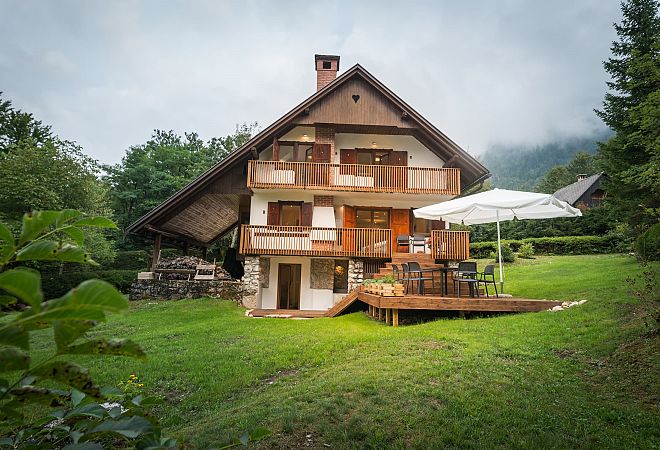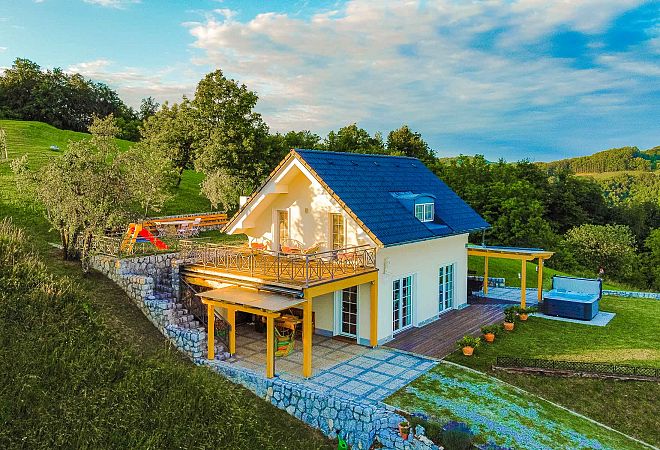Ordering Land Surveys
Many of our clients find themselves needing to use the services of a land surveyor in Slovenia, especially for more remote, country properties. Often they are not totally clear on what is required or why so below is a short guide to the services they can offer. The main public land register of plots is the 'Kataster' and the main public register of buildings is 'Kataster Stavb' and this forms the basis of the land surveyor's work. Land surveying in Slovenia is done by registered land surveyor with license who prepares all the necessary documentation for the Land Surveying Authority to approve. Think Slovenia works with a number of tried and tested partner Land Surveying companies who cover the whole of Slovenia.
Fomalising borders
 Many properties in Slovenia - especially outside of towns - are often sold with borders which are defined from the 'kataster' and form years of neighbourly agreements with bordr lines often being market informally by hedges, trees or fences which are shown to the buyer by the seller. This is not a problem in most cases but be aware that these are not official recognised borders and the borders defined in the 'kataster' are not presumed to be 100% accurate. In some cases it is sensible or necessary for owners to formalise borders to settle disputes, allow construction of new buildings close to borders etc. You can formalise borders by instructing a registered land surveyor to place official border stones. The land surveyor does this on the basis of natural borders and cadastral maps but must also invite all the owners of neighboring plots to discuss and agree on the exact border position. The land surveyor this infomration into a document called an 'elaborat' signed by all the neighbours to the border. This then gets sent to surveying authority who confirms the content and registers the new borders in the 'kataster'. The whole process usually takes a couple of months
Many properties in Slovenia - especially outside of towns - are often sold with borders which are defined from the 'kataster' and form years of neighbourly agreements with bordr lines often being market informally by hedges, trees or fences which are shown to the buyer by the seller. This is not a problem in most cases but be aware that these are not official recognised borders and the borders defined in the 'kataster' are not presumed to be 100% accurate. In some cases it is sensible or necessary for owners to formalise borders to settle disputes, allow construction of new buildings close to borders etc. You can formalise borders by instructing a registered land surveyor to place official border stones. The land surveyor does this on the basis of natural borders and cadastral maps but must also invite all the owners of neighboring plots to discuss and agree on the exact border position. The land surveyor this infomration into a document called an 'elaborat' signed by all the neighbours to the border. This then gets sent to surveying authority who confirms the content and registers the new borders in the 'kataster'. The whole process usually takes a couple of months
Land parcellation
An owner of many land plots can apply to merge contiguous plots together or vice versa an owner of a large plot can apply to separate them into many smaller ones. This is typically done when developing land or also if selling part of a piece of land. The process is also arranged by a land surveyor who similarly to the above must submit an 'elaborat' showing the changes to plot boundaries to the Land Surveying Authority for confirmation and inscription into the 'Kataster'. The whole process usually takes a couple of months end to end.



Border alteration
If two neighbours would like to alter a border, they can do so under the condition that the size of the smaller plot doesn't change more than 5% of the plot area and not by more than 500 m2. Usually border alterations are done when neighbours want to make a complex border straight and there is give and take on where the border will run usually resulting in a net difference in land area for each neighbour of zero or close to zero. After putting together the documentation the surveyor will have to submit it to the authorities and go through the process of Land Surveying Authority Approval.


Land Survey - 'Geodetski Načrt'
In Slovneia you need Land Surveys for various purposes; most likely for obtaining building permission, but also for technical checks of the building, or in relation to some procedures concerning newly built properties. The Land Survey is a drawing of the current state of the land and needs to include at the least data about relief, water, buildings, usage of land, flora, and details about land plots. The most common usage is as an essential and integral part of all building permission applications.
Marking out a new build
 If you are constructing a new building then a land surveyor will need to visit at the time of starting the build process to mark all the corners where the new build should be positioned. This is an essential part of building a new property.
If you are constructing a new building then a land surveyor will need to visit at the time of starting the build process to mark all the corners where the new build should be positioned. This is an essential part of building a new property.
Registering a building into the registers of buildings and cadastral maps.
After a new built is finished it needs to be registered in the building register and also in the cadastral maps. The land surveyor needs to prepare two different pieves of documentation which correspond to each other. The land surveyor measures the building from outside and assigns coordinates and also measures the property on the inside to determine gross floor area and usable floor area. In a multi unit building the land surveyor would also determine shares of common areas of the building. The building and its units get an identification number in this process. Also in this process land surveyor submits the documentation to the land surveying authorities who then confirm everything and enter the data into publically accessible databases. Once you have registered your building in the cadastral maps you will also get an allocated house number. Often older builidngs are not yet visible in the cadaster despite having house numbers and whilst this is not necessarily a problem, in some cases new buyers will want or need to get this done.
Establishing condominial ownership - 'Etažna lastnina'
Older multi unit buildings often still have their ownership defined onthe basis of a % of the overall building rather than condominial ownership - ie ownership of a specific, defined unit visible in the Land Registry. The process of changing this so that owners each have their specific unit defined and inscribed in the Land Registry is known as 'Etažna Lastnina'. This process is conducted by a land surveyor who drafts a document called an 'elaborat' showing, measuring and allocating ownership of the various elements of the building. It also establishes each owner's share of the common areas of the building. This process takes several months to complete or longer for larger buildings or complex situations where there are disputes about ownership of some areas.


